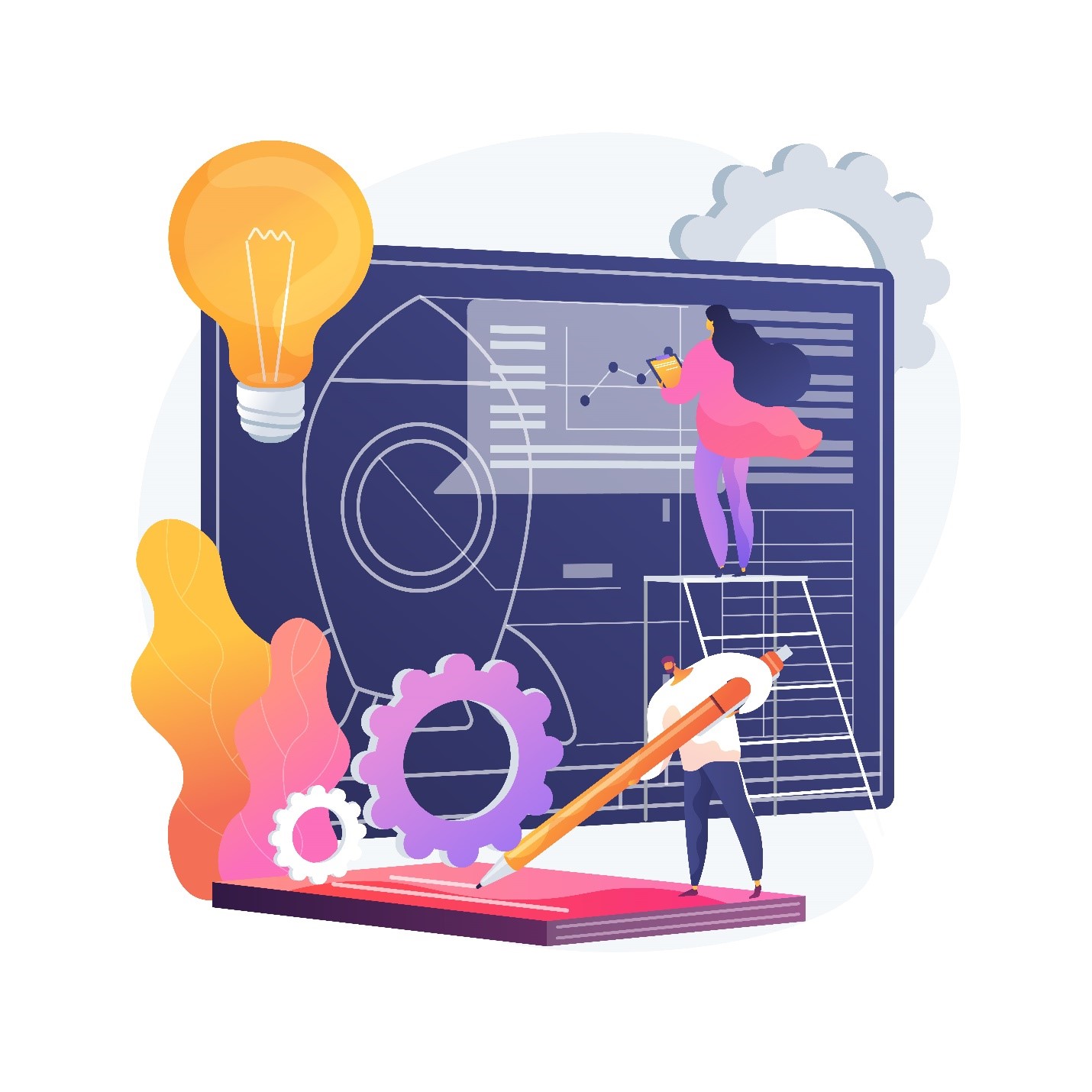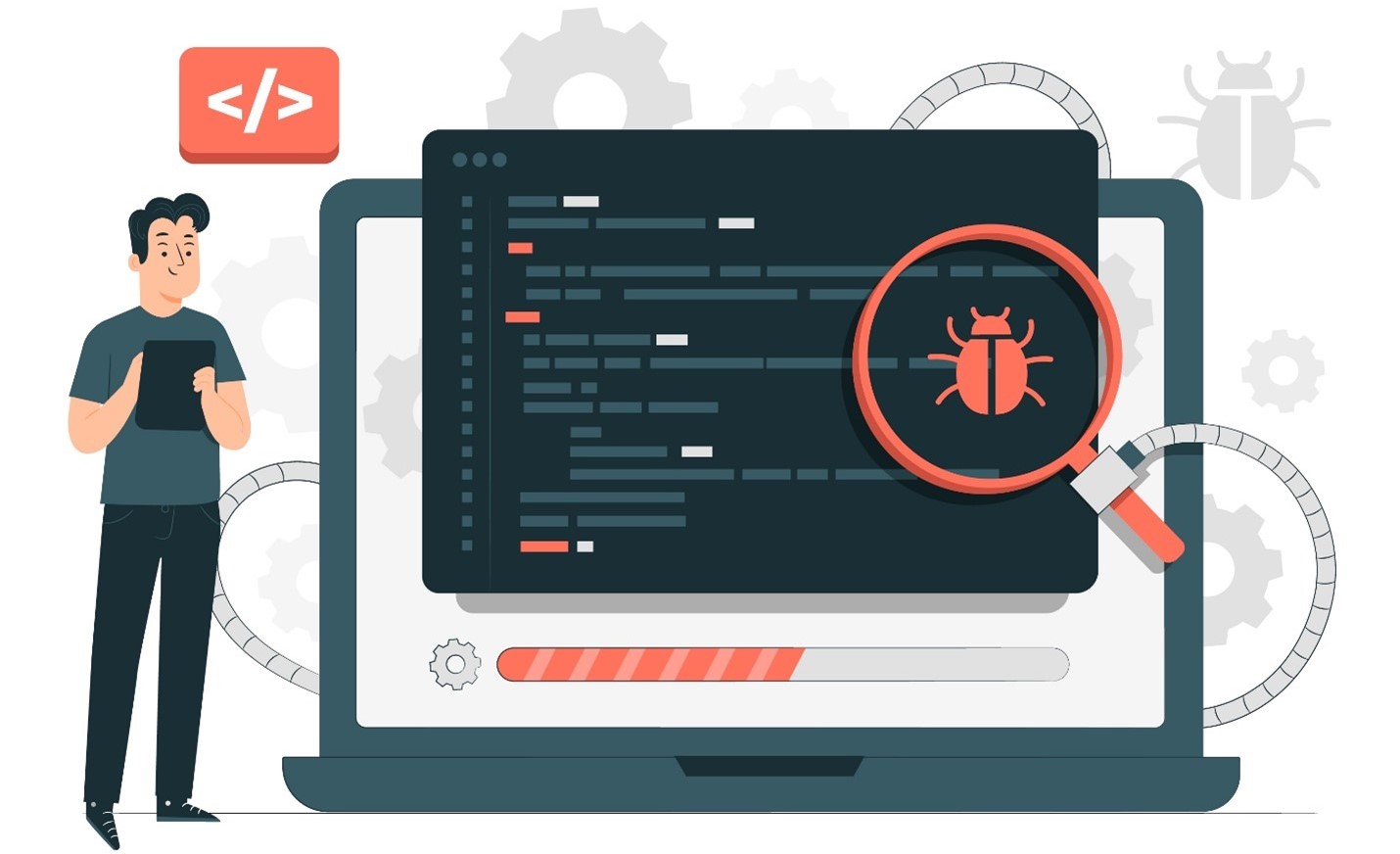In today’s fiercely competitive marketplace, bringing a new product to life requires more than just a good idea. A structured product development process acts as a roadmap, guiding businesses from the initial spark of inspiration to a successful market launch and beyond. By following these steps in new product development, companies can increase their chances of creating products that resonate with customers, achieve commercial success, and propel them towards long-term growth.
According to a study, 70% of projects fail in the product development stage. This statistic highlights the importance of a well-defined development process to increase the odds of success for new products.
This comprehensive guide delves into the seven crucial stages of product development, equipping product managers, entrepreneurs, and R&D teams with the knowledge and tools to navigate this critical journey.
Stage 1: From Spark to Direction: Ideation and Conceptualization
The product development process begins with a spark – the identification of a problem or an unmet need in the market. This initial stage, known as ideation and conceptualization, lays the foundation for the entire project. Here’s a closer look at the key activities involved:
- Defining the Problem: The first step involves clearly defining the problem your product aims to solve. Conduct thorough market research to understand customer pain points, frustrations, and unmet needs. What are people struggling with? What are the existing solutions, and where do they fall short?
Did you know? 73% of consumers say they are willing to pay a premium for a product that solves a problem for them effectively. By clearly defining the problem you’re addressing, you’re setting yourself on the right track to creating a product that offers real value to your target audience.
- Brainstorming Bonanza: Once you’ve identified the problem, it’s time to unleash your creative energy! Brainstorming sessions are a fantastic way to generate a multitude of ideas. Encourage participation from diverse teams to tap into a wider range of perspectives. Techniques like mind mapping, SCAMPER (Substitute, Combine, Adapt, Modify, Put to Other Uses, Eliminate, Reverse), and brainwriting can help spark innovative solutions.
- Feasibility Check: Not all ideas are created equal. After brainstorming, subject each concept to a feasibility check. Consider factors like technical viability, market demand, production costs, and potential return on investment. Conduct market research to gauge customer interest and identify potential competitors.
- Concept Validation: The most promising ideas will undergo concept validation. This might involve creating mockups, prototypes, or even user surveys to get early feedback and refine your concept before committing significant resources to development.
Real-World Example:
Let’s take the example of GoPro, the renowned action camera company. Nick Woodman, GoPro’s founder, identified a problem – the lack of a convenient way to capture high-quality video during extreme sports activities. Through brainstorming and concept validation, GoPro developed a durable, compact camera that allowed athletes and adventurers to capture their experiences in a whole new way.
This initial stage of ideation and conceptualization lays the groundwork for a successful product. By clearly defining the problem, fostering creative exploration, and validating your concept, you ensure your product is well-positioned to address a genuine customer need.
Stage 2: Unveiling the Landscape: Market Research and Analysis
Following the spark of ideation, a successful product development process hinges on a thorough understanding of the market landscape. This stage, market research and analysis, involves gathering valuable data and insights to inform your product strategy and decision-making.
Here’s a breakdown of the key activities involved in market research and analysis:
- Conducting Comprehensive Research: Employ various research methodologies to gather data about your target market, competitors, and industry trends. This might involve online surveys, focus groups, in-depth interviews, competitor analysis, and market reports.
- Analyzing Market Trends: Identify emerging trends within your industry that could impact your product’s success. Are there any technological advancements, changing consumer behavior patterns, or social shifts that you need to consider?
- Understanding Customer Needs: Delve deeper into your target customer’s needs, preferences, and pain points. What are their buying habits? What features and functionalities would they value most in a product like yours? How much are they willing to pay?
- Competitive Analysis: Analyze your competitors’ products and marketing strategies. Identify their strengths and weaknesses, and explore any gaps in the market that your product can address.
- Validating Your Product Concept: Use the data and insights gathered from market research to validate your initial product concept. Does your product address a genuine need in the market? How does it stack up against the competition?
Market Research in Action:
Let’s revisit the GoPro example. Through market research, GoPro’s team discovered a growing demand for capturing action sports and outdoor adventures. Existing bulky video cameras weren’t ideal for these activities. Market research not only validated the need for a compact and durable camera, but also helped GoPro understand their target customer – adventurous individuals who prioritize capturing their experiences in a shareable format.
By conducting comprehensive market research and analysis, you gain a clear picture of the market landscape. This knowledge empowers you to make data-driven decisions, refine your product concept for optimal market fit, and ultimately increase your chances of success.
Stage 3: From Vision to Prototype: Design and Prototyping
With a validated product concept and a solid understanding of your target market, it’s time to translate ideas into tangible form. The design and prototyping stage is where your product’s visual identity, user experience (UX), and core functionalities begin to take shape.
Here’s a closer look at the key activities involved:
- Translating Ideas into Designs: Work with designers and UX professionals to translate your product concept into visual designs. This might involve creating user flows, wireframes, mockups, and prototypes to explore different design options and user interactions.
- The Power of Prototyping: Develop low-fidelity and high-fidelity prototypes to test your design concepts with real users. This allows you to gather valuable feedback on usability, functionality, and user experience early on in the development process. Low-fidelity prototypes can be simple sketches or paper mockups, while high-fidelity prototypes are more refined and interactive representations of the final product.
- User Testing and Feedback Integration: Conduct user testing sessions to observe how users interact with your prototypes. This feedback is crucial for identifying any usability issues, refining your design, and ensuring a smooth and intuitive user experience. Usability testing can be conducted in-person or remotely, using various tools and techniques.
Real-World Example:
Remember the now-ubiquitous ride-hailing app, Uber? In its initial stages, Uber relied heavily on user testing and feedback during the design and prototyping phase. Early prototypes used paper maps and basic interfaces to test the core functionality of requesting and tracking rides. Through user feedback, Uber was able to iterate on the design, improve usability, and ultimately create a seamless user experience that revolutionized the transportation industry.
The design and prototyping stage allows you to bridge the gap between concept and reality. By creating tangible prototypes and incorporating user feedback, you can ensure your product is not only visually appealing but also intuitive, user-friendly, and addresses the needs of your target audience.
Ready to Prototype Your Groundbreaking Idea?
Neuronimbus Transforms Concepts into Compelling User Experiences.
Get Started
Stage 4: Building the Dream: Product Development and Refinement
With a user-tested and refined design in hand, you’re ready to embark on the product development and refinement stage. This is where the magic happens – your product concept transforms from a prototype into a fully functional reality.
Here’s a breakdown of the key activities involved:
- Transition from Prototype to Full-Scale Development: Work with engineers and developers to translate the final design into a functional product. This might involve coding, building hardware components, integrating software, and ensuring all functionalities work as intended.
- Technical Challenges and Solutions: Throughout development, you’ll likely encounter technical challenges. The development team will work to identify and address these challenges, ensuring the product
Stage 5: Ensuring Quality: Testing and Quality Assurance

A product’s success hinges not only on its functionality and user experience but also on its quality and reliability. The testing and quality assurance (QA) stage ensures your product meets the highest standards before it reaches your customers’ hands.
Here’s a breakdown of the key activities involved:
- Rigorous Testing Methodologies: Implement a comprehensive testing strategy that encompasses various functionalities, performance metrics, usability, and user interface (UI) elements. This might involve unit testing, integration testing, system testing, and user acceptance testing (UAT).
- Ensuring Product Quality and Compliance: The QA team will ensure your product adheres to all relevant industry standards, safety regulations, and performance benchmarks. This is crucial to avoid product recalls and ensure a positive user experience.
- Pre-Market Testing and User Trials: Conduct pre-market testing and user trials with a broader group of users to gather further feedback and identify any lingering issues. This final round of testing helps to refine the product and ensure a smooth market launch.
Testing in Action:
Take the example of Tesla, the electric vehicle (EV) manufacturer. Tesla is renowned for its rigorous testing procedures. Their vehicles undergo extensive simulations, crash tests, and real-world driving scenarios to ensure safety, performance, and durability. This commitment to quality assurance has played a significant role in Tesla’s success within the competitive EV market.
By implementing a robust testing and QA program, you can identify and rectify any defects or performance issues before launch. This not only protects your brand reputation but also fosters customer trust and satisfaction.
Stage 6: Charting the Course: Market Launch Strategy
Following the product development and refinement stages, it’s time to unveil your creation to the world. The market launch strategy outlines the roadmap for introducing your product to your target audience and generating excitement and demand.
Here’s a closer look at the key components of a successful market launch strategy:
- Planning and Execution: Develop a comprehensive market launch plan that defines your target audience, marketing channels, promotional strategies, pricing strategy, and launch timeline. Consider factors like seasonality, competitor launches, and potential marketing partnerships.
- Marketing and Promotional Strategies: Craft compelling marketing and promotional campaigns to generate awareness, educate potential customers about your product’s benefits, and build brand excitement. Utilize a mix of marketing channels, such as social media marketing, content marketing, influencer marketing, public relations, and advertising, to reach your target audience effectively.
- Distribution Channels and Go-to-Market Plans: Determine the most effective distribution channels to get your product into the hands of your target customers. This might involve online marketplaces, brick-and-mortar retail stores, or a direct-to-consumer (D2C) sales model. Develop a go-to-market plan that outlines your sales strategy, pricing structure, and distribution channels.
Launch Like a Pro:
Remember the phenomenal success of the Apple Watch? Apple’s meticulous market launch strategy played a vital role in its popularity. Apple utilized a multi-channel marketing campaign, leveraging social media, celebrity endorsements, and in-store product demonstrations to generate buzz and excitement. They also partnered with leading retail chains to ensure the Apple Watch was readily available for purchase on launch day.
By creating a well-defined market launch strategy, you can ensure your product reaches the right audience, generates maximum impact, and positions itself for long-term success.
Stage 7: Learning and Evolving: Post-Launch Review and Improvement

The product development process doesn’t end with the launch. The post-launch review and improvement stage is critical for gathering valuable insights and ensuring your product continues to meet customer needs and market demands.
Here are some key activities involved in this stage:
- Collecting User Feedback and Performance Data: Implement mechanisms to gather user feedback and track key performance indicators (KPIs) after launch. This might involve customer surveys, app reviews, social media mentions, website analytics, and sales data.
- Continuous Improvement Based on Feedback: Analyze the data and feedback you collect to identify areas for improvement. This could involve addressing usability issues, adding new features, or refining your marketing strategy based on customer insights.
- Scaling the Product and Future Development: Based on your post-launch learnings, you can develop a plan to scale your product and explore further development opportunities. This might involve expanding into new markets, introducing new product lines, or integrating new technologies.
The Learning Curve:
Let’s revisit GoPro’s journey. Since its initial launch, GoPro has continuously evolved based on user feedback and market trends. They’ve introduced new camera models with improved functionalities, expanded their product line to include drones and accessories, and adapted their marketing strategies to cater to new customer segments. This commitment to continuous improvement has been instrumental in GoPro’s enduring success within the action camera market
A Brand's Journey: Case Study in Product Development
Understanding how successful companies navigate the steps in new product development can provide valuable insights for your own endeavors. In this section, we’ll delve into the product development journey of a well-known brand, highlighting the key stages and the lessons learned.
Introducing Dollar Shave Club:
Dollar Shave Club (DSC) disrupted the men’s grooming industry with its innovative subscription model for razors and other personal care products. Here’s a closer look at how DSC navigated the crucial stages of product development:
- Ideation and Conceptualization: The founders identified a problem – the high cost and inconvenience of traditional razor purchases at retail stores. They envisioned a subscription service offering high-quality razors at a significantly lower price point.
- Market Research and Analysis: Market research confirmed the frustration with overpriced razors and a growing consumer openness to subscription models.
- Design and Prototyping: DSC focused on a user-friendly online platform and partnered with manufacturers to create high-quality razors at a competitive price.
- Product Development and Refinement: The initial product offering was a single razor option, with refinements based on customer feedback informing the expansion of their product line.
- Testing and Quality Assurance: Rigorous testing ensured product quality and a smooth online ordering and delivery experience.
- Market Launch Strategy: Dollar Shave Club launched with a now-iconic viral marketing video that captured the brand’s unique voice and resonated with its target audience. They leveraged social media marketing and influencer partnerships to further amplify their reach.
- Post-Launch Review and Improvement: DSC continuously analyzed customer data and feedback. This led to the introduction of new product lines, personalized recommendations, and a focus on building a strong customer loyalty program.
Lessons from Dollar Shave Club:
Dollar Shave Club’s success story offers valuable takeaways for aspiring product developers:
- Identify a Genuine Customer Need: Focus on solving a real problem for your target audience.
- Embrace Innovation and Disruption: Don’t be afraid to challenge the status quo and explore new business models.
- Prioritize User Experience: Design a product that is not only functional but also intuitive and user-friendly.
- The Power of Data-Driven Decisions: Leverage market research and customer feedback to inform your product strategy and refine your offerings.
Continuous Improvement is Key: Never stop learning and evolving based on market trends and customer insights.
Is Your Product Primed for Massive Scale?
Neuronimbus Powers Post-Launch Success and Expansion.
Scale Up
Conclusion: Empowering Your Product Development Journey
The road to successful product development is an exhilarating adventure filled with challenges and opportunities. By following a strategic, user-centric approach, you can navigate the complexities and unlock the true potential of your innovative ideas.
At Neuronimbus, we understand the complexities of product development. Our cutting-edge solutions provide strategic guidance, empowering you to navigate challenges and unlock your idea’s true potential. Partner with us to embark on an extraordinary journey, redefining industries and creating transformative experiences.




